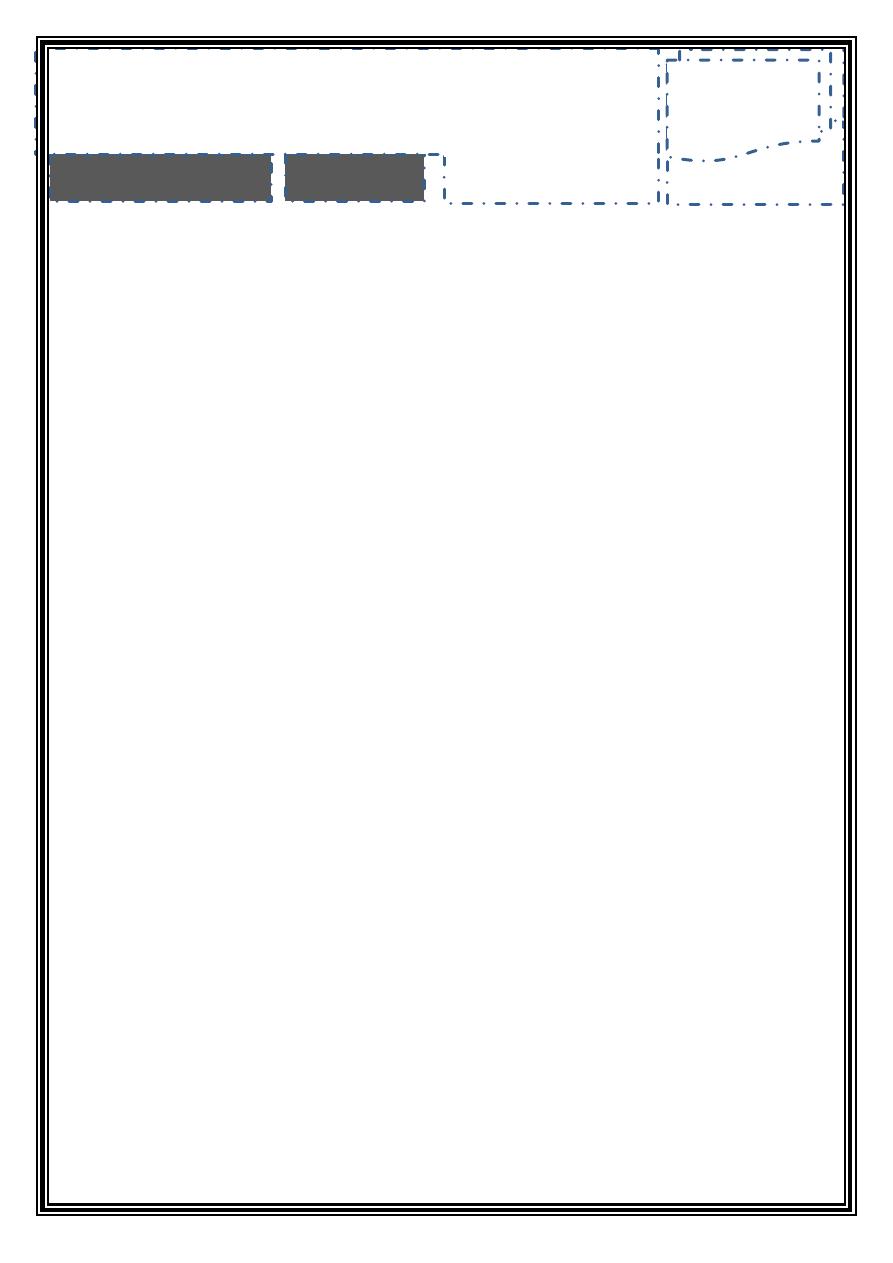
Page1
Pain:
It is a personal experience & communication about it depending on experience &
vocabulary of the patients & interpretation depending on the experience of the clinician.
So the pain serve as useful precaution, the dentists must distinguish between pain
perception & pain reaction. Also details about character, severity, location, duration,
frequency, relieving & worsening factors should be taken, together with through clinical
examination to reach the diagnosis
Pain
is the signal that warns of a threat to the integrity of the organism.
Or: It is unpleasant sensory & emotional experience associated with actual or potential
tissue damage
Pain is known in medical & dental field as neuralgia which is defined as pain corresponding
to known anatomical distribution of the nerve.
The pain receptor is known as nociceptor & the fibers that carrying pain impulses are:
1. A delta fiber (1-4 micrometers, 5-15 m/sec)
2. C fibers (0.5-1 micrometer, 0.5-2 m/sec)
There are 3 types of neuralgia
A. Primary neuralgia
B. Secondary ( symptomatic)neuralgia
C. Atypical facial pain.
A. Primary neuralgia:
A mixture of deep & superficial pain which varies in intensity &
usually continuous although there are a rare remission &frequent exacerbation, there are
associated objective signs of interruption of continuity of the nerve, tends to spread
gradually to contiguous area
It is associated with paroxysmal pain (shock like, stabbing) which lasts seconds with
complete or almost complete remission between spasms. The pain is usually so severe that
the face is distorted with anguish, the eye fixed; speech & mastication are involuntarily
arrested.
Nov 29 & 22
.د
ﻏﺴﺎن
4 Sheets / 200 I.D.
ﻃﺐ
ﻓﻢ
-
ف
١
2
Facial Pain
part 1 and 2

Page2
The cranial nerves in which primary neuralgia are found:
1. Trigeminal nerve (trigeminal neuralgia=tic douloureux)
2. Glossopharyngeal nerve
3. Facial (geniculate neuralgia)
4. Superior laryngeal
5. Greater auricular
Etiology of primary neuralgia:
There is no known pathology for the primary neuralgia.
However; there are (2) exception
1. Tic like pain of primary neuralgia may occur in the early stage of progressive lesion
which involve invade or compress the ganglion for example (tumor, inflammation or
aneurysm) but this stage is transient & it soon followed by destruction of the ganglionic
cell which leads to sensory & motor paralysis
2. Primary neuralgia may persist for a long period with slowly progressive lesion for
example ( multiple sclerosis, tapes dorsalis, Paget's disease)
The characteristic of primary neuralgia
1. Nature of the pain is sudden attack of bright pain
2. Presence of trigger zone
3. The presence of refractory period, an interval of (2-3) minutes must elapse before any
further paroxysmal pain can be induced by stimulation of the same area.
4. Only temporary relief is obtained by interrupting the peripheral nerve pathway either
surgically or by injection of alcohol.
5. Destruction of the ganglion itself by hot water or alcohol may effectively cure the pain,
but if the destruction is incomplete, regeneration occurs & the pain will return.
6. Preganglionic root section cure the vast majority of cases, but if the operation is delayed
(2-3) years higher station will become unstable by repeated bombardment from the
lower cell station & thus preganglionic root section may be ineffective.
7. It has been shown that 10% of patients with trigeminal neuralgia are found with vascular
abnormality
8. There are evidences that primary neuralgia is benefited by anticonvulsant drugs. The
patient may need (200-400) mg \ day then dose should be reduced gradually until reach
the maintenance dose, which is usually range between (400-800) mg \ days.

Page3
Trigeminal neuralgia (TN)
Also called tic douloureux, is the most common of the cranial neuralgias and chiefly affects
individuals older than 50 years of age. When younger individuals are involved, suspicion of a
detectable underlying lesion such as a tumor, an aneurysm, or multiple sclerosis must be
increased.
It affects the elderly patient, the maxillary or mandibular division usually involved but rarely
the ophthalmic nerve involved. 10% of cases have detectable underlying pathology
The pain may be precipitate by touching the trigger zone, washing the face, cold wind
blowing on the face, chewing or even talking.
The majority of patients with TN present with characteristic clinical features, which include
episodes of intense shooting stabbing pain that lasts for a few seconds and then completely
disappears. The pain characteristically has an electric shock-like quality and is unilateral
except in a small percentage of cases.
Rx.
1. Carbamazepine (Tegretol®) in small dose 100-200 mg \ day & gradually increase the
dose over 2-3 weeks to 200-400 mg 1x3
2. Phenytoin 200-400 mg \ day
3. Clonazepam 1-2 mg 1x3
4. Topical capsaicin cream
5. Although permanent cure could be achieved by surgical sectioning of the affected nerve
but this should be done in the early stage.
6. Injection of pure alcohol in the affected ganglion lead to temporary relief of pain for
about 6 months to 2 years
7. 5% of phenol in glycerin causes partial sensory loss of pain
8. Electrocoagulation of ganglion
9. Microvascular decompression
10. Gamma knife radio surgery
Glossopharyngeal neuralgia:
The trigger zone is either tonsil ler fossa, posterior 1/3 of the tongue, side of the soft palate,
posterior part of the conches or auditory canal
The pain precipitated by swallowing, yawing, coughing or food touch the tonsillar area
Rx. is similar to that for TN with a good response to carbamazepine and baclofen.
Refractory cases are treated surgically by intracranial or extracranial section of CNIX,
microvascular decompression in the posterior cranial fossa.

Page4
Postherpetic neuralgia:
It is usually felt deep in the ear. It may be mistaken with TMJ pain & pain from teeth.
However; the severity of pain & the association of previous herpes infection could help in
diagnosis. Pain that persists longer than a month is classified as postherpetic neuralgia. PHN
may occur at any age but the major risk factor is increasing age. The varicella-zoster virus
injures the peripheral nerve by demyelination, wallerian degeneration, and sclerosis &
changes in the CNS, including atrophy of dorsal horn cells in the spinal cord lead to this
neuralgia. Rx. The use of antiviral drugs, particularly famciclovir, along with a short course
of systemic corticosteroids during the acute phase of the disease may decrease the
incidence and severity of PH.
Superior laryngeal neuralgia
This is usually felt deep in the throat occasionally in the lower part of the face & gum
Great auricular neuralgia
It is often felt at the angle of the jaw; this may be differentiated from dental pain by giving
inferior alveolar nerve block to exclude the dental pain.
Nervous intermedius (geniculate) neuralgia:
Nervous intermedius (geniculate) neuralgia is an uncommon paroxysmal neuralgia of CNVII
characterized by pain in the car and (less frequently) the anterior tongue or soft palate. The
location of pain matches the sensory distribution of this nerve (ie, the external auditory
canal and a small area on the soft palate and the posterior auricular region

Page5
B. Secondary neuralgia:
A-Intra cranial
B-Extra cranial
A- Intracranial
:
This group consist of tumors including
1. Those of pituitary
2. Aneurysms as of the carotid in the cavernous sinus
3. Brain stem lesions (multiple sclerosis, vascular malformation); in such cases pain is
intermittent at first & then become sever. Later on it is accompanied by other
manifestation such as disturbance of vision, restricted movement of the eye balls,
defective hearing & cervical lymph node enlargement.
4. Cranial base lesion (injury to the cranium, Paget's disease) in this group the pain
continues &may be bilateral & associated with loss of hearing & disturbance of
vision.
B- Extracranial
1. Localized facial pain
a. Focal reversible pulpits.
b. Acute pulpits.
c. Chronic pulpits.
d. Acute periapical abscess.
e. Chronic periapical abscess.
2. Disease of the sinuses.
3. Disease of the ear.
4. Disease of the TMJ & muscles.
5. Referred & radiating pain.
a. Anginal pain
b. Cervical spondylosis
c. Cardiac end of stomach
d. Trapezius muscle spasm
6. Vascular pain
a. Giant cell arteritis.
b. Migraine headache.
c. Cluster headache.
Giant cell arteritis:
temporal arteritis occurs most frequently in older persons usually
between the ages of (55-80). It usually affects women more than men .The pain may be
localized first in teeth, TMJ, Scalp or occipital area. Nearly one half of the patients complain
of tiredness. Fatigue and pain on repetitive chewing (jaw claudication: stopping of the
mandible)
Usually there is localized inflammation over the swollen, nodular, tortures artery. Diagnosis
is confirmed by an arterial biopsy & early diagnosis is essential to prevent severe
consequence (blindness).

Page6
Migraine syndrome:
pain characterized by the sudden onset of recurrent violent
unilateral but sometime bilateral paroxysmal attack of cephalgia accompanied by visual
disturbance, irritability, nausea & vomiting (Pre headache phase). There are two type of
migraine: classic (prodromal sensory &visual symptom and common (no prodromal sensory
& visual symptom)
The classic theory is that migraine is caused by vasoconstriction of intracranial vessels
followed by vasodilation. Newer research techniques suggest a series of factors, including
the triggering of neurons in the midbrain that activate the trigeminal nerve system in the
medulla, resulting in the release of neuropeptides such as substance P. These
neurotransmitters activate receptors on the cerebral vessel walls, causing vasodilation and
vasoconstriction.
The attack usually begins during the second decade of life; there is family history & common
in professional person. It may be triggered by foods such as nuts, chocolate, and red wine
(which is rich in tyramine which is the precursor of the serotonin), stress, sleep deprivation,
or hunger. Migraine is more common in women.
The headache phase consists of severe pain in the temporal frontal and retro orbital areas.
Treatment: the preheadache phase usually responds to:
1. Aspirin (300- 900mg)
2. Paracetamol (1g)
3. Antiemetic such as metoclopramide (Plasil® I00mg) or Prochlorperazine (Stemetil®
5mg)
If migraine attacks occur frequently enough to disturb work and social life, prophylactic
drugs are indicated such as:
1. Propanolol (Inderal® 40-80mg 1x3)
2. Pizotifen (Sandomigrain® 1.5-3 mg)
3. Antidepressant such as amitriptyline (Tryptizol® 25-100 mg)
All of these agents have some blocking activity on 5-hydroxy tyramine
Migraine is treated by giving ergotamine tartrate (Cafergot®) the maximum daily does 6mg
& up 10 mg per week
In resistance cases methysergide (I-2mg) is often effective but should be given for course of
three months & renal function should be monitored.

Page7
Cluster headache
(called: Horton syndrome, migrainous neuralgia, histamine cephalgia )
The attack occur in cluster and the pain is unilateral severe knife like which may last from 10
minutes to 3 hours
The recurrent attack of knife like pain affects the temporal area unilaterally passing into the
forehead, the side of the head and the shoulder. it may radiate to the mandible but not to
the longue or lip, The intensity of the pain is so severe that during which the patient cannot
lay down but prefers to sit or walk, This symptom occur chiefly in male over 40 year of age,
it is usually nocturnal in nature, The attack may be precipitated by alcohol beverages or
histamine injection, these material induce autonomic effects manifested as nasal
congestion, lacrimation and edema of the eyelid and face.
Rx. : Drug which is used in treatment of cluster headache are ergotamine, serotonin
antagonist (methysergide which causes retroperitoneal fibrosis), cyproheptadine
(Periactin®), Pizotifen, amitriptyline, steroid (prednisolone) & indomethacin (Indocin®)
Inhalation of oxygen may shorten attack of symptoms
Surgical intervention have been tried, it includes trigeminal sensory rhizotomy, gamma knife
radio surgery & decompression of the nervus intermedius
Nasopharyngeal tumor (
retropharyngeal tumor, Trotter’s syndrome )
Pain is experienced in the mandible, side of the tongue, with headache in the affected side,
unilateral deafness, deviation of the palate, defective mobility of the soft palate. There is
cervical lymphadenopathy
It is a carcinoma situated in the lateral pharyngeal fossa, it grows beneath the mucosa &
extend below the skull involving the maxillary nerve (at very early stage), then other 5
P
th
P
cranial nerve divisions, then 9
P
th
P
nerve, 10
P
th
P
nerve & upper cervical root. These tumors are
highly radiosensitive.
Frey's syndrome
(auriculotemporal syndrome)
This is associated with chronic parotitis or surgery in the parotid gland. The condition is
thought to arise following damage to auriculotemporal nerve which contains postganglionic
parasympathetic fibre from otic ganglion, this damaged fiber become united to the
sympathetic nerve from the superior cervical ganglion which supply the sweat gland.
Clinically there are sweating & flushing of the skin over the distribution of the
auriculotemporal nerve take place following stimulation of salivary secretion.

Page8
Tension Headache:
It’s the most common type of headache & is often associated with anxiety state. The pain is
constant, dull, felt in frontal and occipital region like a tight band around the head. The
etiology of this headache is muscle tension. Dx: history &evidence of anxiety state, Rx:
reassurance & simple analgesia like aspirin & paracetamol
C. Atypical facial pain
It refers to a mixed group of condition which are defined & diagnosed by exclusion of the
other typical patterns of facial pain. it is usually psychogenic & occurs in patients who suffer
from depressive reaction , hysteria or schizophrenia .It is more common in women in sixth
decade. The pain is deep, poorly localized, vaguely described by the patient & often spread
not only to the other side of the face but to the neck & mastoid region
Treatment: Tricyclic antidepressant (amitriptyline, nortriptyline)
